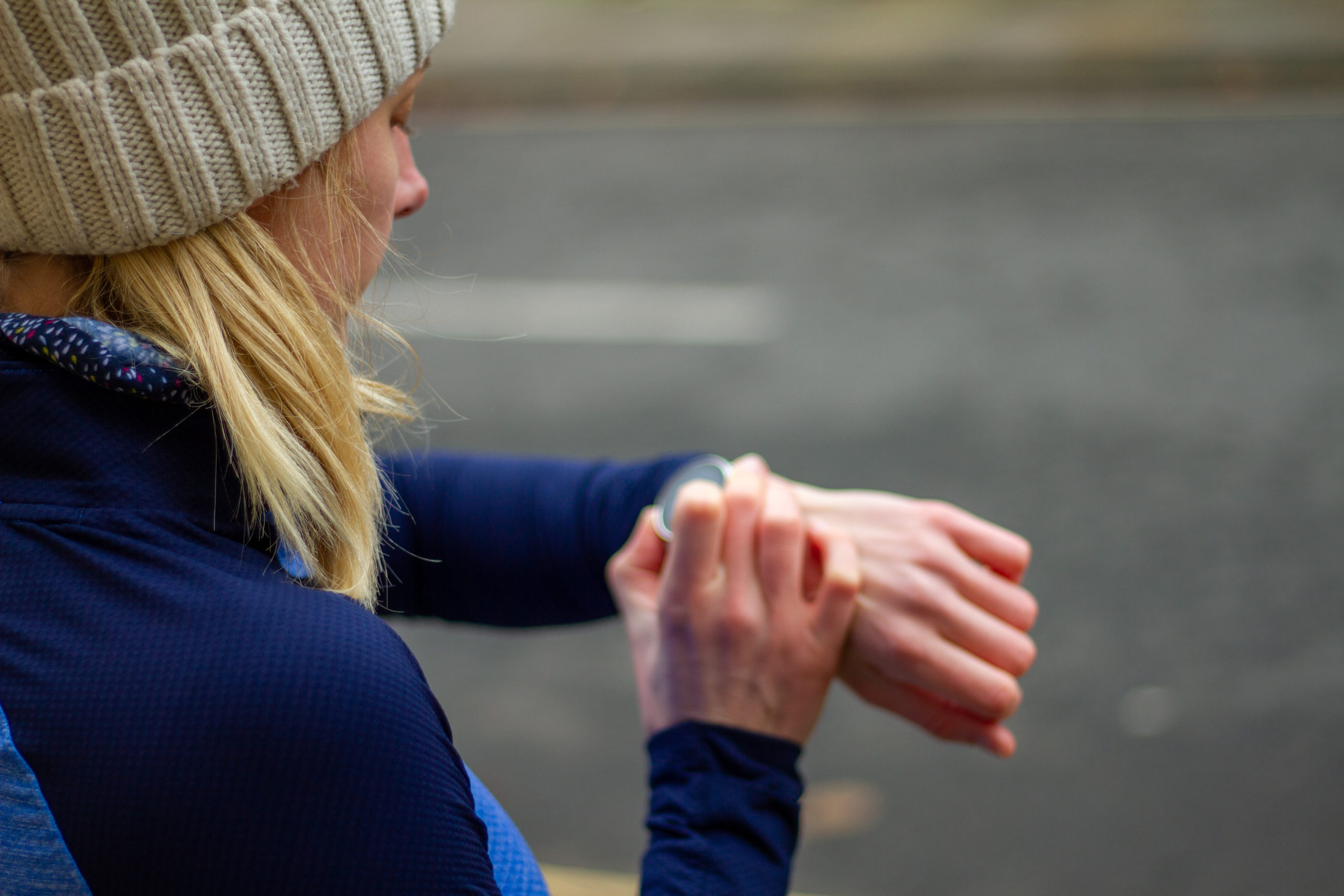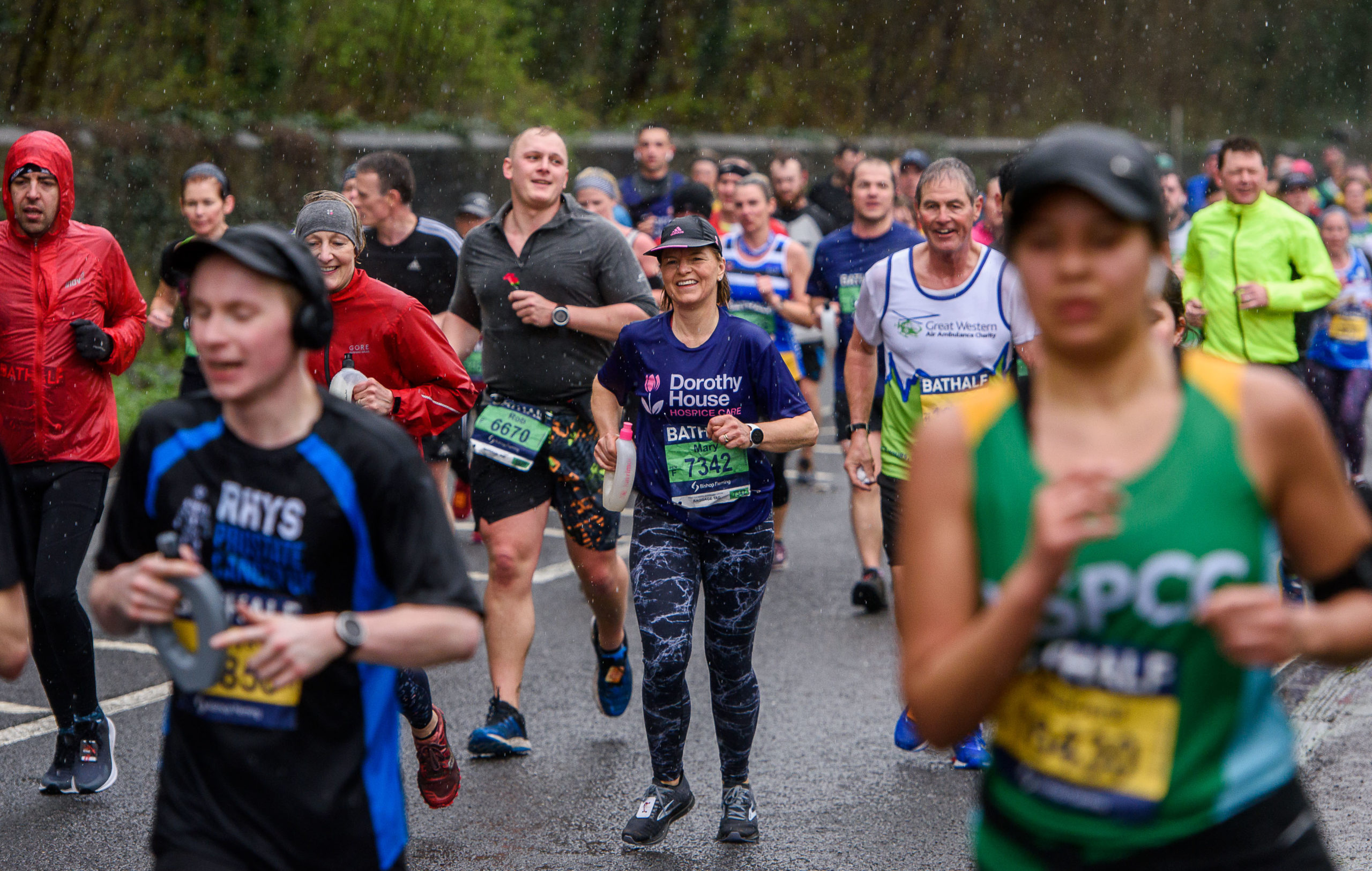Get Race Ready
Get Race Ready

Training
The final piece of your Virtual Bath Half training should be a taper. This is a period of lower volume training and is a tool to help you reach peak performance. The goal of a taper is to freshen up and dissipate accumulated fatigue from your training.
Your taper should be individual to you; there is no one size fits all and you may need to experiment to find what suits you best.
However, a meta-analysis (a study which compares lots of individual studies) concluded that reducing training volume by 40-60% in a progressive manner over the final two weeks prior to the race is a good place to start for the majority of endurance athletes.
For example, if you’ve been running on average 30 miles a week for the past four weeks then you would aim for 18 then 12 miles per week (not including the race) in the two weeks leading up to race day. You might also reduce the reps and/or sets in your strength sessions to reduce volume here as well.
You should still include some time at intensity (i.e., intervals) but you may run less of them. It is really important to maintain intensity throughout a taper, including strength training. You can front load your week to allow adequate recovery from these sessions.
You can read the study by clicking here.
The goal is to turn up on race day raring to go and in peak fitness. Don’t fall into the trap of training hard right up to race day because you’re afraid to lose fitness or that you’ve not trained ‘enough’. Your longest run should be two weeks out from race day and will make the start of your taper period.
Tapers can be unnerving because you’re training less which feels counterintuitive. It is so important to “trust the process” and not panic if you’re not feeling good on a given day/session. Come race day you should feel competition hungry, well-rested and raring to go!
Nutrition
Endurance performance relies on having sufficient fuel available for energy production. It doesn’t matter how much training you’ve done; if you fuel insufficiently you will pay for it and it will suck (harsh but true!). This needs to be practised and is a key part of your preparation and performance.
Before the race
A lot of runners want to know about carbohydrate loading. The goal of this nutritional strategy is to maximise the amount of glucose available for energy production. This is achieved by increasing your carbohydrate intake to maximise glycogen stores in your muscles and liver prior to race day.
Carbohydrate loading should take place 2-5 days prior to the race and you should aim to consume 5-7 g per kg of bodyweight of carbohydrate per day.
Aim to eat a high carbohydrate (CHO) breakfast 3-4 hours before your race start time. This meal should be made up of slow release (low GI) carbohydrate and 1-4 g CHO per kg bodyweight. If you are susceptible to gastro-intestinal issues than avoid fat and fibre at this meal. Consume 500 ml fluid with this meal. The size of your meal depends on how long before the start you eat. You want your food to be digested before you begin.
A small snack with 1g CHO per kg bodyweight can be eaten with one hour to go to top you up! Pick a quick release (high GI) carbohydrate and keep sipping on fluid in the build-up. The key here is to experiment and find what works for you in advance of race day. There are plenty of opportunities to do this in training.
Some examples to try are:
Bagel, toast, porridge, bananas, cereal bars.

During the race
How much you need to eat during the race depends on how long you’ll be running for.
Follow this framework when planning your fuel strategy:
For efforts lasting 1-2 hours aim to consume around 30g CHO per hour.
For efforts lasting 2-3 hours aim to consume around 60g CHO per hour.
Some examples include:
Cereal bar, banana, energy gels, jellybeans/babies, sports drink. Look at the label to see the carbohydrate content and calculate how much you need for your bodyweight/race pace.
It is absolutely VITAL that you practise fuelling and running prior to race day as it can cause gastrointestinal problems. The good news is you can train your gut to tolerate CHO, so start with smaller amounts of CHO and look to progress. Your long run is a great opportunity to try out different amounts and types of carbohydrate and find out what works for you.
Hydration wise, it is important to take on small amounts of fluid regularly as dehydration of more than 2% bodyweight will negatively impact performance. If you’re a salty sweater then consider electrolyte tablets to replenish salts as well.
After the race
Well done you’ve finished!
You will have depleted yourself both physically and mentally. The final piece of the puzzle is your post-race recovery (the good bit!).
The aim is to replenish and allow time to recover so that your body can rebalance and restore itself back to baseline.
Consider these four elements:
EAT – consume a post-race meal that contains 1g CHO per kg bodyweight and 0.3 g protein per kg bodyweight to replenish glycogen and aid muscle protein synthesis for muscle repair. The sooner the better for this meal, so if you aren’t going straight home make sure you have some snacks with you for immediately post-race.
DRINK – aim to replenish any fluid lost during the race. To work this out, weigh yourself before and after. Drink 1.5 l fluid for every kg lost over a period of 3-4 hours. Chose squash or milk to ensure you are replenishing lost salts as well as water.
REST – racing is very demanding, and you should avoid intense exercise in the days following so that your body can recover. I’d encourage some gentle movement and very easy running can be helpful, but it is not essential. If you want to run, then run but if not don’t stress. Wait until you feel like it again.
SLEEP – we recover when we sleep and getting less than 7h is detrimental so in the nights following the race make sure you’re getting to bed with enough time to sleep for 7-9 hours.
Prioritise refuelling, rest and sleep and you’ll be feeling good again in no time.
Mindset
Before I wrap up, a quick word on mindset.
Racing is tough and there are bound to be parts of your virtual Bath Half that test you, especially as you’ll be running solo. Here are my top tips to help you keep going in those tough moments:
- Connect to your why to remind yourself what it’s all for
- Use self-talk/mantras e.g., “I am capable of this”
- Remember the tough sessions you have done to boost your self-belief
I know there is a lot to think about when it comes to race day. Something that helps me is to have a pre-race checklist and planner to use the night before to help me get ready and use on the day for any last-minute panics. If you’d like to use my template, you can download it by clicking here.
And remember it’s a virtual race, so you can plan and execute exactly to your liking. Race at a time when you perform best, pick a route you know and enjoy having plenty of space to run. Play to your strengths!
Good luck!
For free training, workout and warm up/cool down advice follow me on Instagram.
I help runners train smart so they can increase mileage and speed safely. My Run Strong membership offers virtual strength classes and personalised run coaching in four-weeks blocks. For more information or to try a taster class, click here.
Article by:
Kim Murray – Owner of KimFit; a personal training and coaching service for runners
MSc Exercise Physiology, BSc Sport and Exercise Science, Level 3 Personal Trainer and Former Great Britain Skeleton Athlete

